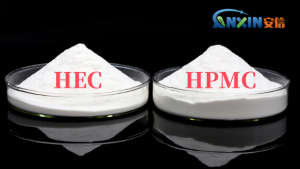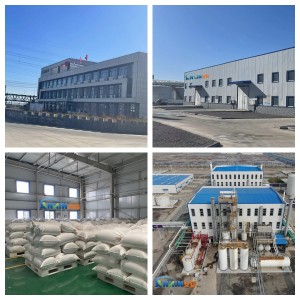HEC (hydroxyethyl cellulose) and HPMC (hydroxypropyl methyl cellulose) are both non-ionic cellulose ether chemicals widely used in construction, coatings, daily chemicals, food, and pharmaceuticals. However, they differ significantly in their chemical structure, performance characteristics, and application priorities.
1. Chemical Composition and Structure
HEC: Produced by reacting natural cellulose with ethylene oxide after alkalization, hydroxyethyl substituents are introduced into the molecular chain. The degree of substitution and viscosity grade are adjustable, and the molecule has high polarity, good solubility, and is primarily hydrophilic.
HPMC: Produced by reacting natural cellulose with propylene oxide and methyl chloride after alkalization, hydroxypropyl and methyl substituents are introduced into the molecular chain. The methyl groups increase hydrophobicity, while the hydroxypropyl groups enhance hydrophilicity and thermal gelation properties.
2. Water Solubility and Dissolution
HEC: Dissolves directly in cold water to form a transparent solution. The dissolution rate is relatively slow, but the solution is stable and highly tolerant to salts. HPMC: It can also dissolve in cold water, but the “hot water dispersion, cold water dissolution” method is often used to prevent clumping. Its solution is highly transparent and exhibits reversible thermogelation (it forms a gel upon heating to a certain temperature and returns to a solution upon cooling).
3. Thickening and Rheological Properties
HEC: It has high thickening efficiency, exhibits pseudoplastic rheology, and produces a smooth feel and film. It is suitable for systems requiring high transparency and high fluidity.
HPMC: Its thickening capacity is slightly lower than that of HEC at the same concentration, but it has better water retention, can improve structural structure and sag resistance, and is more suitable for formulations requiring strong workability.
4. Water Retention and Film-Forming Properties
HEC: It has moderate water retention and low film-forming properties. It is primarily used for solution stabilization and thickening.
HPMC: It has strong water retention and can effectively slow water loss in building mortars and putty powders, improving workability. It also exhibits moderate film-forming properties, which help enhance adhesion and surface finish.
5. Salt and Temperature Resistance
HEC: It has strong salt resistance and is often used in systems containing salt, alkaline, or some extreme environments, such as oilfield drilling fluids. Its temperature resistance is average, and its viscosity tends to decrease at high temperatures.
HPMC: Its salt resistance is not as good as HEC, but it has better temperature resistance, and its thermal gelation properties can be used in specialized processes (such as tablet coating and food thickening).
6. Key Application Differences
HEC: In the construction industry, it is mainly used in coatings, adhesives, oilfield chemicals, papermaking, and daily chemical products (shampoo, detergent). Its advantages are high transparency, good hand feel, and strong salt and alkali resistance.
HPMC: It is more commonly used in construction mortars, putty powders, tile adhesives, gypsum products, food additives (thickeners, stabilizers), pharmaceutical tablet bonding, and sustained-release coatings. Its advantages are water retention, good workability, and excellent film-forming properties.
7. Cost and Selection
HEC: Its production cost is relatively high, but it offers excellent value for money in applications requiring high transparency and in saline and alkaline environments. HPMC: With a slightly lower overall price and a high usage rate in dry-mix mortar, it is the mainstream cellulose ether in construction.
HEC tends to be preferred for applications requiring good transparency, salt and alkali resistance, and high fluidity; HPMC is more suitable for applications requiring high water retention, workability, and film-forming properties. The selection process should be based on a comprehensive consideration of the formulation’s solution appearance, environmental conditions, construction requirements, and cost.
Post time: Aug-11-2025








